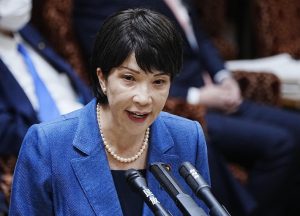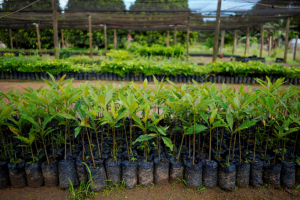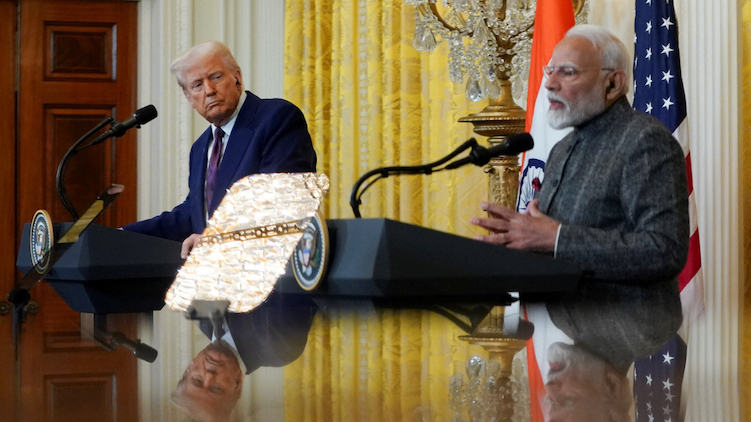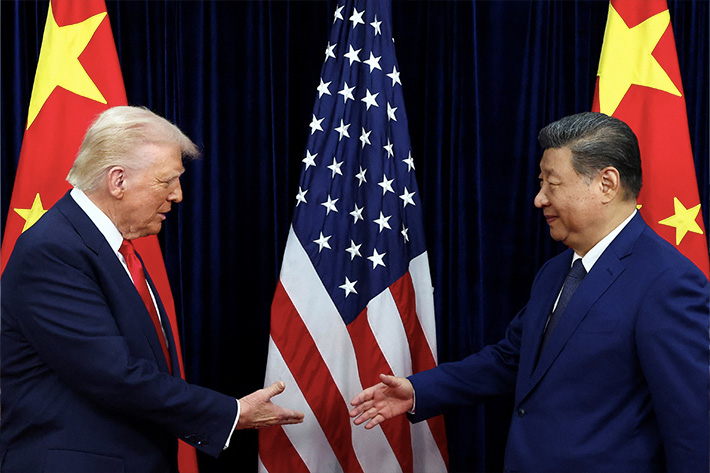Solar and wind power plants generated more energy than coal for the first time ever in the first half of 2025, according to a new report.
Climate think tank Ember said the report, which analysed global electricity production from January to June – and compared it with figures from last year, was undertaken to assess the progress of the global energy transition.
The report was based on monthly electricity data from 88 countries that represent 93% of the world’s electricity demand and included estimates for the remaining generation. It described the rise of renewables as a turning point for the global power system.
ALSO SEE: India Plans Countrywide Climate Insurance Amid $180bn Losses
Solar and wind power outpaced global electricity demand, with “spectacular” growth of solar power accounting for 83% of the rise and many countries setting new records, while there was a slight decline in power from fossil fuel sources in China and India.
“This led to renewables overtaking coal’s share in the global mix and prevented further increases in CO2 emissions from the power sector,” it said.
‘A crucial turning point’
A senior electricity analyst at Ember, Malgorzata Wiatros-Motyka, said: “We are seeing the first signs of a crucial turning point. Solar and wind are now growing fast enough to meet the world’s growing appetite for electricity.”
Global electricity demand grew by 2.6% – 369 Terawatt hours – in the first half, but this was met by an increase of 306 TWh in solar and 97TWh of wind power. Hydropower fell significantly, while bioenergy dipped slightly, nuclear power rose modestly, while fossil fuel generation (coal, oil and gas) fell marginally (0.3%), it said.
Solar enjoyed record growth and now generates 8.8% of global electricity. The main contributors to the growth in this period were China (55%), the US (14%), the EU (12%), India (5.6%), Brazil (3.2%) and the rest of the world (9%).
Four countries now get over a quarter of their energy from solar and at least 29 countries get over 10% of their electricity from solar power plants.
Meanwhile, coal generation fell by 31 TWh to 4,896 TWh. That meant renewables generated 34.3% of global electricity, while power generated by coal fell to 33.1%, thanks mainly to growth in clean power sources in China and India.
In the US, fossil fuel generation rose, while the EU saw a slight rise in coal and gas power generation to offset a drop in wind, hydro and bioenergy output.
Emissions fell slightly, by 12 metric tons of carbon dioxide (MtCO2) in the six months, thanks mainly to China and India, but rose by 13 MtCO2 in the EU and 33 MtCO2 in the US, compared to the same period in 2024, the report said.
Sonia Dunlop, CEO of the Global Solar Council, hailed the “historic shift,” saying Ember’s analysis “confirms what we are witnessing on the ground: solar and wind are no longer marginal technologies — they are driving the global power system forward.”
“But to lock in this progress, governments and industry must accelerate investment in solar, wind, and battery storage, ensuring that clean, affordable, and reliable electricity reaches communities everywhere,” she said.
Renewables to double by 2030: IEA
Meanwhile, a separate report by the International Energy Agency (IEA) on Tuesday (Oct 7) said the amount of installed renewable power is forecast to more than double by the end of the decade, despite “supply chain strains, grid integration challenges, financial pressures and policy shifts.”
Solar would account for around 80% of the global increase in renewable power capacity over the next five years, it said, thanks to low costs and faster permit timeframes – followed by wind, hydro, bioenergy and geothermal.
‘Renewables 2025‘, the IEA’s main annual report on the sector, sees global renewable power capacity increasing by 4,600 gigawatts (GW) by 2030 – about the same as adding China, the European Union and Japan’s combined power generation capacity, it said.
IEA executive director Fatih Birol said China would continue to be the world’s biggest growth market for renewables, and that India would emerge as the second largest by the end of the decade, while countries such as Saudi Arabia, Pakistan and several Southeast Asian would also make substantial contributions.
However, it trimmed its global forecast because of weaker prospects in the United States, due to an early phase-out of the US federal tax incentives and other regulatory changes, while China’s shift from fixed tariffs to competitive auctions was also expected to squeeze project economics.
India was on course to comfortably reach its 2030 target, supported by expanded auctions, faster permitting and a rooftop-solar surge, it said.
Europe’s prospects had improved on the back of ambitious policies, larger auction volumes and streamlined approvals, while many emerging economies across Asia, the Middle East and Africa were accelerating buildouts as costs fall and targets rise, the report said.
- Jim Pollard with Reuters
ALSO SEE:
China Aiming to Double Battery Storage, Holds First Solar Auction
US Says Hidden Radios Found in Solar Highway Tech From China
Rogue Communication Devices Found in Chinese Solar Inverters
China Lays Down Law to Solar Panel Makers: End Overproduction
Chinese Solar Firms Shed 87,000 Workers, And More Will Go
China Polysilicon Firms Seek $7bn to Shut a Third of Solar Sector
China’s Leaders Keen to End Vicious Price Wars, Curb Deflation
Solar Overcapacity Kills Projects, Fuels Bankruptcies In China
Spending on Global Energy Transition Well Under What’s Needed






















